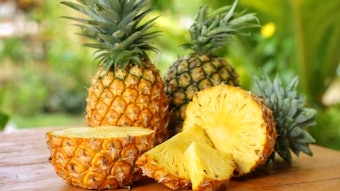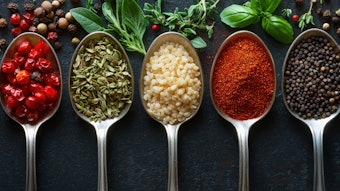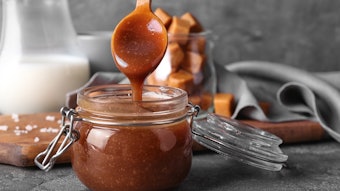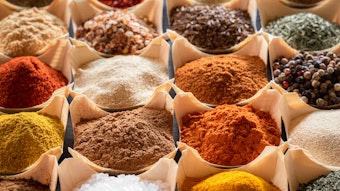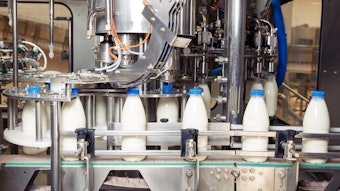
Oct-3-en-2-one (FEMA#: 3416, CAS#: 1669-44-9) is a bright, high impact, nutty character with a mild associated fruity note. It can be used successfully in a very wide range of flavors way beyond the obvious nut category. It is especially useful in the savory category, adding an extra layer to their profiles.
Note that the dose rates given throughout this article are the levels suggested for use in flavors intended to be dosed at 0.05% in ready-to-drink beverages or in a simple bouillon.
Nut Flavors
Almond: Realistic almond flavors can use 3-octen-2-one at a variety of levels, but 50 ppm is typical.
Hazelnut: Nut flavors are often thin and simplistic. 3-Octen-2-one adds realistic nut character and a pleasant fruity complexity. One hundred ppm is a good initial level
Peanut: Similar levels of use, around 100 ppm, are equally useful in peanut and peanut butter flavors, enhancing the nutty notes and adding realism and complexity.
Pecan: This also applies to pecan flavors, where 100 ppm is again ideal.
Pistachio: The effect in pistachio flavors is analogous to that in almonds and the ideal level of use is also around 50 ppm.
Walnut: This ingredient is also ideal for walnut flavors, and levels can be higher, ranging up to 300 ppm.
 Up to 200 ppm of oct-3-en-2-one can boost aggressive green tea profiles.Adobe Stock
Up to 200 ppm of oct-3-en-2-one can boost aggressive green tea profiles.Adobe Stock
Savory Flavors
Asparagus: Asparagus flavors are a small, but interesting category. They can tend to be a little one dimensional and lack depth. Ten ppm of 3-octen-2-one goes some way towards rectifying the problem.
Beef, Roast: 3-Octen-2-one adds depth and realism to all types of beef flavors, from boiled to roast and barbequed. Widely varied levels of addition can work, starting at 200 ppm.
Chicken: The same applies to chicken flavors, working equally well with boiled and fried profiles. Levels of use can start at 100 ppm, but much higher levels, around 1,000 ppm, can also be very interesting in white meat flavors.
Ham, Pork and Bacon: One hundred ppm is a good level in a whole range of processed pork flavors, notably ham, bacon and chopped pork, adding to complexity and realism.
Lamb and Venison: 3-Octen-2-one adds interest and authenticity to both lamb and venison flavors at 100 ppm.
Mushroom: Equally relatively high levels, around 100 ppm, can also be used in all types of mushroom flavors, raw, dried or cooked, and of almost every variety of mushroom. Boletus or Cep type flavors benefit most from this ingredient.
Onion, Fried: 3-Octen-2-one adds very welcome complexity and authenticity to most onion flavors at levels in the region of 100 ppm. It is most effective when recreating the complex character of fried onions.
Peppers: All types of pepper flavors, especially bell pepper flavors can benefit from the addition of around 50 ppm of 3-octen-2-one. Higher levels can be effective in jalapeno flavors.
Rice, Cooked: Cooked rice flavors often lack depth. A moderate addition, around 30 ppm, of 3-octen-2-one helps remedy this.
Seafood: 3-Octen-2-one can add depth to all flavors from the sea. One hundred ppm works well in oily fish flavors, such as salmon. Lower levels are better in shellfish flavors.
Fruit Flavors
Apple: Thirty ppm is a good starting level of addition of this ingredient in apple flavors. It remains in the background but adds authenticity.
Apricot: This chemical is found in nature in apricots Levels of use start at 50 ppm in lighter, floral style, flavors.
Banana: Banana flavors can often seem too simplistic and ester dominated. This ingredient adds an intriguing element to the fruity note but also adds complexity and realism. Levels of use start at 100 ppm.
Blueberry: 3-Octen-2-one performs well in blueberry flavors at quite low levels, typically 20 ppm.
Lime: Similar levels, around 20 ppm, work well in fresh lime flavors and also in both lemon flavors and in lemon lime blends.
Orange: Only trace amounts are needed to produce a significant effect in fresh orange juice flavors, in the region of 10 ppm.
Peach: The fruity note of 3-octen-2-one is especially well suited to peach flavors, where it adds significantly to the authenticity of the profile. The nutty aspect reinforces an attractive aspect of the peach skin character. Fifty ppm is an ideal starting level.
Plum: This is only a minor flavor category for most of the world but it can occasionally be interesting and 3-octen-2-one adds much needed authenticity. Ideal levels in plum flavors are quite low, in the region of 20 ppm.
Strawberry: 3-Octen-2-one is clearly not the dominant unsaturated ketone note in strawberry flavors but it can, nevertheless, exert a positive effect at a low level in blends with other unsaturated ketones at around 20 ppm.
 A similar level to honey (10 ppm), apply to the use of 3-octen-2-one in pandan flavors can add complexity.Adobe Stock
A similar level to honey (10 ppm), apply to the use of 3-octen-2-one in pandan flavors can add complexity.Adobe Stock
Brown Flavors
Caramel: Caramel flavors gain complexity from the addition of around 100 ppm of this raw material.
Chocolate: Forty ppm of this ingredient is useful in all types of chocolate flavors. It is especially useful in the context of reinforcing the cocoa notes.
Sugar, Brown: Levels vary considerably in this category of flavors. Low levels, around 20 ppm, are effective in mild brown sugar flavors, but ten times as much boosts flavors with some burnt sugar character.
Tea: 3-Octen-2-one can work well in green and red tea flavors. Twenty ppm is ideal in black tea flavors, but up to 200 ppm can boost aggressive green tea profiles.
Vanilla: Fifty ppm of 3-octen-2-one in vanilla bean flavors has a significant positive effect, adding complexity and realism.
Other Flavors
Butter: Between 50 ppm and 100 ppm can also be useful in the context of both fresh and cooked butter flavors, adding complexity and depth to the dairy note.
Cereal: 3-Octen-2-one enhances all cereal flavors and adds depth. Two hundred ppm is an ideal level of addition.
Cream, Fresh: The effect of 3-octen-2-one in cream flavors is similar to that in butter flavors and the level, between 50 ppm and 100 ppm, is also similar.
Honey: The contribution of 3-octen-2-one to honey flavors is only modest, at around 10 ppm, but it adds attractive complexity.
Pandan: Similar comments, and a similar level (10 ppm), apply to the use of this ingredient in pandan flavors.
